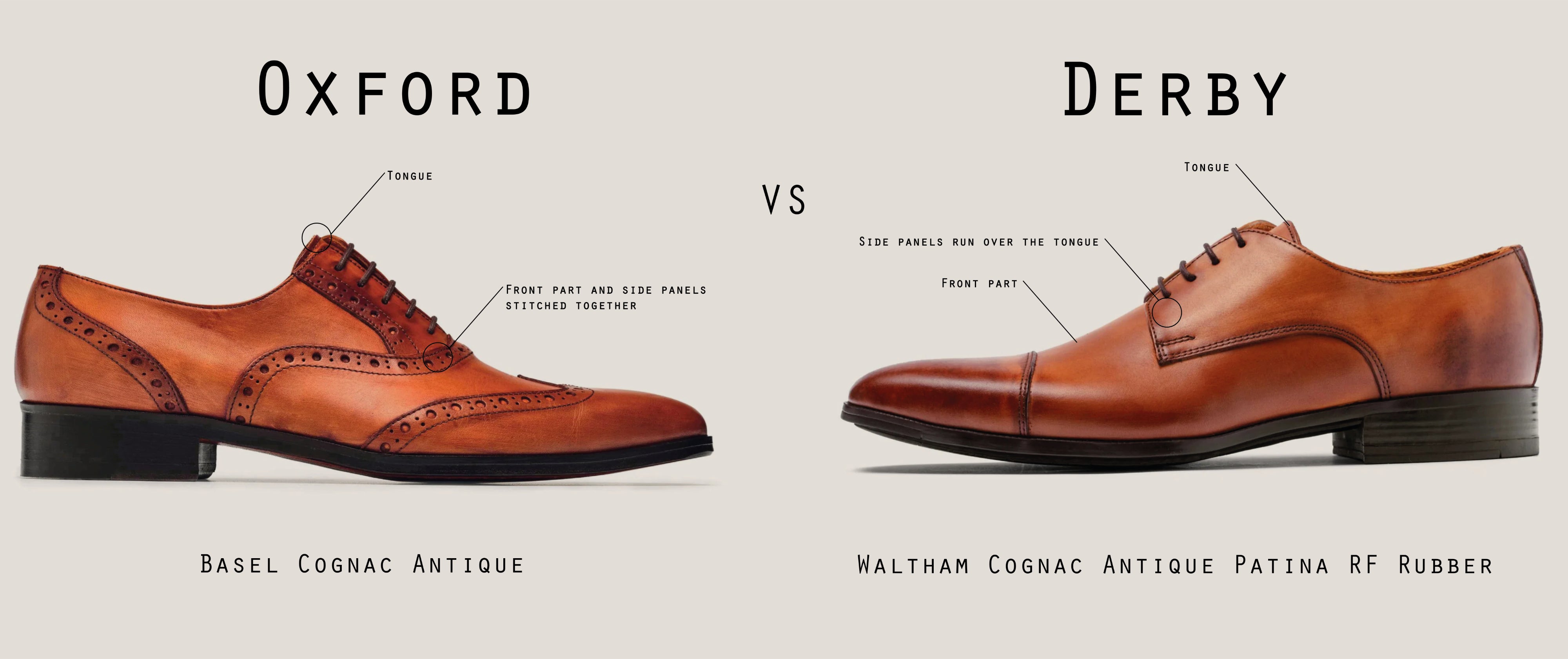Men's shoes come in various styles, including single-buckle monk straps, double-buckle monk straps, tassel loafers, and lace-up shoes like the Derby and Oxford. In this blog, we'll explain the difference between the Derby and Oxford lace-up shoes.
Derby
The Derby model is traditionally considered an informal shoe, often worn with flannel and tweed suits or casual trousers. It's typically made from suede and features rougher soles in double-layered leather or rubber, giving it a rugged appearance that complements the attire it's paired with.
The defining feature of the Derby lace-up is its two side panels that overlap and are laced over the shoe's tongue. This design allows the front part to merge with the tongue, which is located underneath these side panels.
Oxford
The Oxford model is an elegant shoe traditionally worn with formal suits.
The Oxford lace-up differs from the Derby due to its tongueless design. The shoe's front part is stitched directly to the rear side panels, while the tongue is stitched on the inside of the shoe. Held in place by the stitching. The lace closure brings the side panels together.
In the past, Oxfords and Derbys served completely different purposes. Oxfords were considered formal footwear, while a Derby was strictly casual. Today, this distinction is known only to a small segment of the population, and both styles are widely accepted. Even black-tie shoes in patent leather are made in the Derby style by reputable shoemakers.
Conclusion
A Derby features two side panels that run loosely over the instep, with the shoe's tongue integrated into the front part. An Oxford has a tongueless front part, directly stitched to the side panels. The tongue is a separate element stitched on the inside of the shoe.
The Oxford presents a continuous look over the foot, while the Derby, with its side panels overlapping the tongue, creates a distinct break in the design.
Fitting differences
A derby shoe is a more acceptable shoe to wider feet and accommodates a higher instep better than the Oxford. An Oxford lace-up will fit well for narrow and normal to slightly wider feet.

